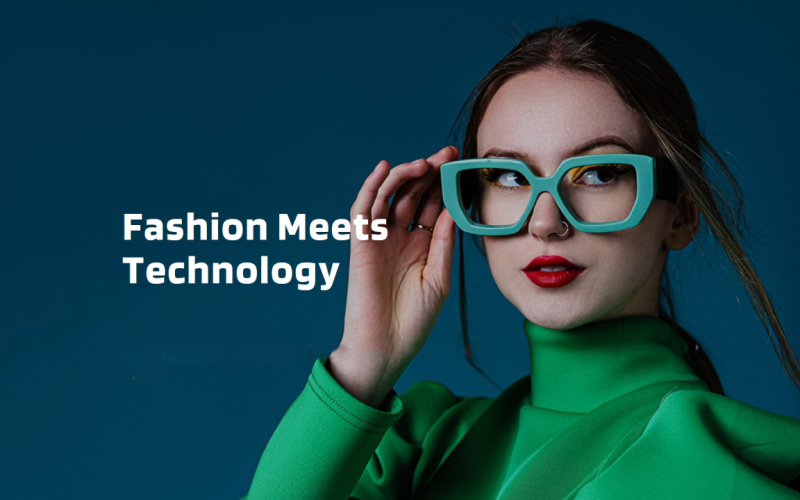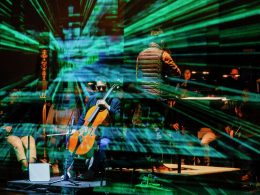Introduction
In today’s world, digital technologies are changing how we see and create style. From fashion to art, these tools are making new things possible. Technologies like artificial intelligence (AI), virtual reality (VR), and digital design are shaping what we wear, how we create art, and even how we decorate our homes. This article looks at how digital technologies are changing the way we think about aesthetics and style.
Virtual Fashion and Digital Design
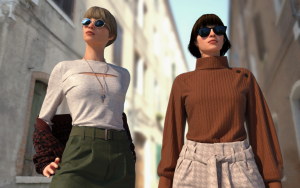
One of the most exciting changes in fashion is virtual clothing and digital design. Digital fashion allows designers to create clothes without needing fabric or physical materials. People can now wear clothes that only exist in the digital world. These clothes can be used in virtual games or online photos. Virtual fashion is growing fast, allowing for more creative freedom and less environmental impact. People can wear bold and unusual outfits that might be impossible or too expensive in the real world.
Artificial Intelligence in Fashion Design
AI is also changing fashion design. AI tools help designers predict trends and suggest what will be popular. AI can look at fashion from social media, blogs, and even online shopping habits to tell designers what people will want to wear next. This helps designers create styles that are in demand, saving time and resources while ensuring they meet consumer needs.
Digital Technologies and Art
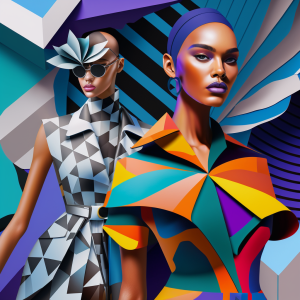
Digital tools are also changing how art is made. Artists now use software like Photoshop, Illustrator, and 3D modeling programs to create their work. These tools give artists the freedom to experiment with different colors, shapes, and textures. Digital art is opening up new possibilities that traditional methods can’t always achieve.
NFTs in Art
Another way digital technology is impacting art is through NFTs (Non-Fungible Tokens). NFTs allow digital art to be sold and owned just like physical art. Artists can create limited edition works, and buyers can own the original piece. This new way of buying and selling digital art is giving artists more ways to make money and reach audiences all over the world.
Social Media and Digital Aesthetics
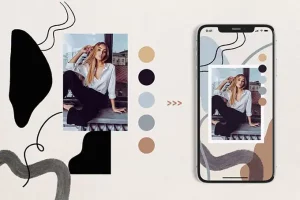
Social media platforms like Instagram and TikTok have become important places for setting and sharing trends. People now get ideas for fashion, makeup, and home decor from online influencers. These platforms help spread new styles quickly, as people can share their looks and find inspiration from others.
Filters and Augmented Reality (AR)
Filters and AR are becoming important tools for creating and sharing styles. On apps like Instagram and Snapchat, people use AR to change their appearance with filters. This technology allows people to create different looks in photos or videos, whether it’s trying out new makeup or wearing virtual clothing. This has led to a new way of creating digital identities where people can control their look.
Changing Beauty Standards Through Digital Technologies
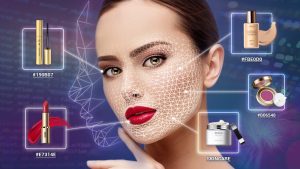
Digital technologies are also changing beauty standards. With the rise of beauty apps and filters, people can change their faces and bodies to look a certain way. While some argue that this creates unrealistic beauty standards, others see it as an opportunity to express themselves in new and creative ways.
The Pros and Cons of Digital Beauty Enhancements
On the positive side, digital beauty tools let people experiment with different styles without making permanent changes. On the downside, some worry that these tools can create pressures to look perfect and lead to lower self-esteem, especially among young people. The debate continues about how these technologies affect how we see ourselves and others.
Digital Technologies in Architecture and Interior Design

It’s not just fashion and art that are changing. Digital technologies are also affecting architecture and interior design. Designers use tools like AutoCAD and SketchUp to plan and create buildings with great accuracy. Virtual reality (VR) helps architects and designers see how a space will look before it’s built. This makes the planning process more interactive and accurate.
Sustainable Design with Digital Technologies
Digital tools can also help reduce waste. With 3D printing, architects and designers can make models without wasting materials. These technologies allow for more sustainable designs that are both eco-friendly and efficient.
The Impact of Digital Technologies on Fashion Design
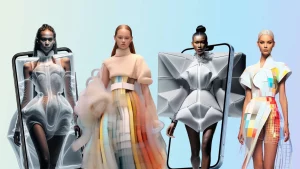
Digital technologies are changing how fashion designers create clothes. With tools like 3D modeling and digital sketching software, designers can easily experiment with new designs before making anything physical. This means they can try out many ideas without wasting fabric or materials. AI also helps by predicting fashion trends, showing designers what colors, shapes, or styles might become popular. Digital fashion is growing too, allowing people to wear virtual clothes online or in video games. This shift in fashion allows for more creativity and less waste, while making it easier to experiment with new looks.
How Social Media Influences Style Trends
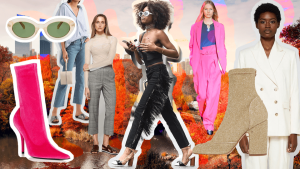
Social media has become a powerful tool in shaping style trends. Platforms like Instagram, TikTok, and Pinterest allow people to share their fashion, makeup, and design ideas with a huge audience. Trends can spread quickly as people see what others are wearing or creating and try it themselves. Influencers on these platforms often set the trends by showcasing their unique styles, encouraging others to follow. Social media has made it easier for people to find inspiration and stay updated on the latest styles. It’s also a space where new, diverse looks can be celebrated, helping people feel more confident in expressing their individuality.
Digital Art and the Creative Process
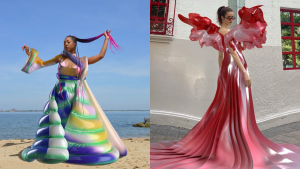
In the world of art, digital tools have opened up a new way to create. Artists can now use software like Photoshop, Illustrator, and 3D programs to design without limits. These tools allow artists to adjust their work easily, change colors or shapes, and try new techniques that might not be possible with traditional art methods. Digital art also allows for quicker production and the ability to share work instantly. Artists can now showcase their creations to a global audience online, reaching more people than ever before. As technology continues to improve, the possibilities for digital art will keep growing.
Customization and Personalization in Fashion and Art
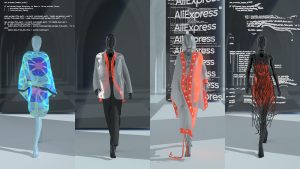
One of the biggest advantages of digital technologies is the ability to customize and personalize designs. In fashion, digital tools allow customers to create their own clothes, choosing colors, patterns, and styles that fit their tastes. Similarly, digital art gives artists the ability to create personalized work for their clients or audiences. With digital technologies, people can tailor their fashion and art choices to express their own unique identity. Whether it’s designing a custom shirt or creating a digital painting that reflects personal style, digital tools are making it easier than ever to stand out and create something special.
Digital Fashion Shows and Virtual Runways
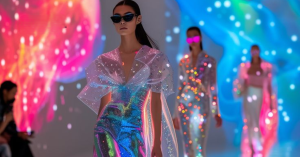
Virtual fashion shows are becoming a major trend, especially in the wake of the global pandemic. Designers now use digital technologies to create runway shows that people can watch from anywhere in the world. These shows are often streamed online, and viewers can see models wearing the latest collections in real-time. Some fashion brands are also experimenting with digital-only clothing lines that can be purchased and worn virtually, especially in online spaces or video games. Digital fashion shows allow designers to reach a wider audience, make their shows more sustainable, and explore creative new ways to showcase fashion.
The Future of Aesthetic Culture
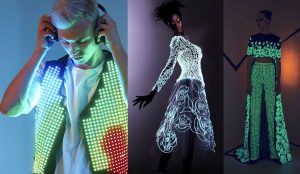
Overall, digital technologies are changing how we create and experience beauty. They are making it easier to express ourselves in new ways. Virtual fashion, digital art, and online trends are all part of the new digital aesthetic. As technology continues to evolve, it will continue to shape how we see and create beauty, offering endless possibilities for innovation and creativity.
Analysis of Digital Technologies’ Impact on Aesthetics
| Technology | Impact on Aesthetics | Industries Affected |
|---|---|---|
| Artificial Intelligence (AI) | Helps predict trends and design new styles. | Fashion, Art, Beauty |
| Virtual Reality (VR) | Allows for virtual experiences and helps design spaces before they are built. | Art, Architecture, Design |
| 3D Modeling & Digital Design | Helps create detailed designs in fashion, art, and architecture. | Fashion, Art, Architecture |
| Augmented Reality (AR) | Changes how we look in photos and videos, creating new styles and identities. | Fashion, Beauty, Social Media |
| Non-Fungible Tokens (NFTs) | Gives artists new ways to sell and share digital artwork. | Art, Digital Collectibles |
| Social Media Platforms | Spreads trends and allows people to share and discover new styles. | Fashion, Beauty, Lifestyle |
Traditional vs. Digital Aesthetics
| Aspect | Traditional Aesthetics | Digital Aesthetics |
|---|---|---|
| Creation Process | Limited to physical materials and traditional tools. | Uses digital tools for creativity and flexibility. |
| Access to Styles | Limited to physical stores and galleries. | Instant access online, with global reach. |
| Sustainability | Often creates waste due to physical production. | Digital tools help reduce waste and environmental impact. |
| Customization | Limited and often costly. | Easy to personalize with digital tools. |
| Interactivity | In-person experiences and physical interaction. | Interactive online experiences and virtual tools. |
Conclusion
Digital technologies are changing how we create and experience style and beauty. Virtual fashion, digital art, and social media trends are all part of this digital revolution. These tools give people more creative freedom, help reduce waste, and allow for greater customization. As technology continues to improve, the future of aesthetics and style will be shaped by these digital innovations, offering exciting new ways to express creativity and beauty.






